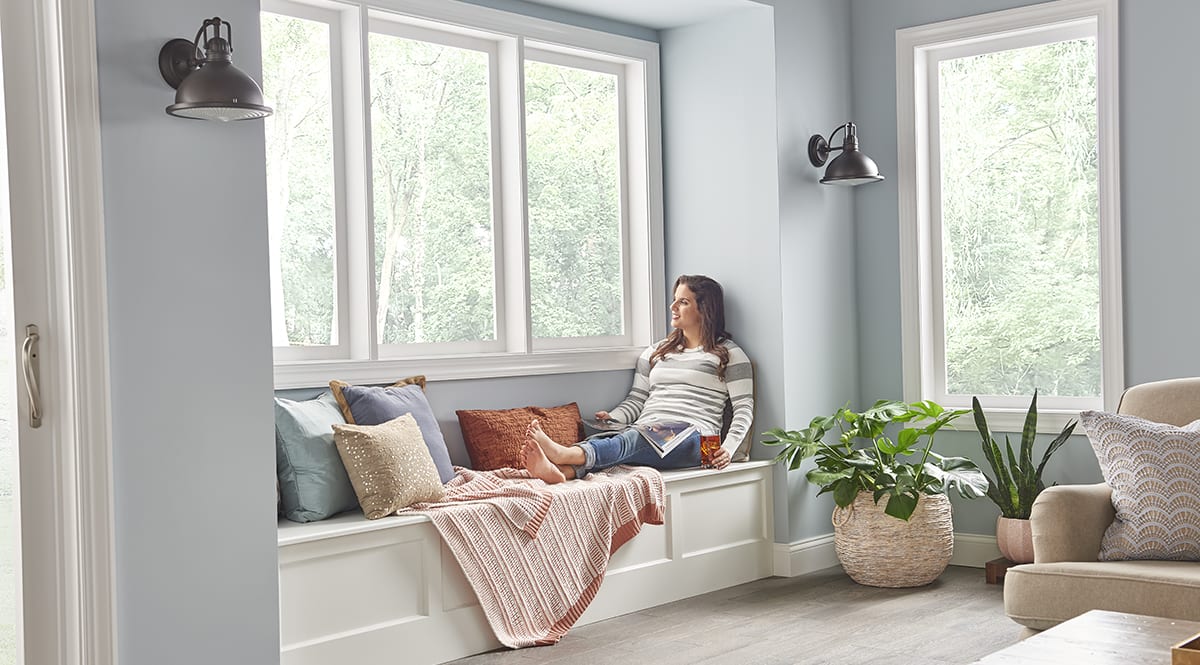What Is Geothermal Heating and Cooling?
By Travis Baugh
A geothermal heat pump taps into the energy of the Earth to heat or cool your home. Learn more about geothermal heating and geothermal cooling in this article.
What Is Geothermal Heating and Geothermal Cooling?

How Does Geothermal Work

What Are The Components Of A Geothermal Heating and Cooling System?
Major components of a geothermal heating and cooling system include:
- Indoor unit that contains a compressor and a fan to move air through your home, with two-stage or variable-speed blowers that ensure even temperatures and the right humidity levels
- Refrigerant that absorbs and releases the heat as it circulates through the system
- Pipes, also called loops, that are installed underground or underwater and are filled with liquid that pulls heat from the soil or water and transfers it into your home
Geothermal Heating and Cooling System Types
- A horizontal loop is placed in trenches six feet underground and is used in homes with larger lot sizes with room to spread them out.
- A vertical loop is placed in a hole running as far down as 400 feet deep and is used in homes with smaller lot sizes that may not be able to accommodate a horizontal loop.
- A pond loop is placed in a natural body of water, 10 or more feet below the surface.
- An open-loop system uses water from the ground, a well, or a lake as the liquid inside the pipes.

Pros and Cons Of Each Geothermal Cooling and Heating System
Open-loop systems are generally more efficient and cost-effective to install, as they utilize the natural heat stored in groundwater. However, they require access to an adequate supply of groundwater and may be subject to water quality regulations.
Closed-loop systems, such as a horizontal loop or vertical loop, are more flexible in terms of location and can be used in areas where groundwater is limited or not easily accessible. Although they tend to have a higher upfront cost, closed-loop systems offer greater durability and require less maintenance.

What Are The Benefits Of Geothermal Cooling and Heating?
- Savings. One of the primary benefits of geothermal systems is their exceptional energy efficiency. Unlike traditional heating and cooling systems that rely on burning fossil fuels, geothermal systems use the earth’s constant temperature to provide heating, cooling, and hot water. By tapping into this renewable energy source, geothermal systems can help cut operating costs up to 70 percent lower than ordinary systems.*
- Comfort. Even temperatures throughout your home all year round.
- Environmentally friendly. Geothermal systems are a greener alternative to conventional HVAC systems. By harnessing the earth’s natural heat, they significantly reduce greenhouse gas emissions and dependence on non-renewable energy sources. Geothermal systems also have a smaller carbon footprint, making them a more environmentally responsible choice for homeowners who prioritize sustainability.
- Reliable. Geothermal systems are known for their exceptional reliability. Geothermal systems have fewer moving parts compared to traditional HVAC systems, reducing the risk of mechanical failures and the need for frequent repairs.
- Quiet. With no above-ground outdoor equipment and a fully insulated indoor cabinet, these units have quiet operation.
- Hot water source. During operation, excess heat can be used to supplement your water heater.
- Long-lasting. The heat pump unit has a lifespan of 20 or more years and the underground loops can have a lifespan of 25–50 years or longer.
Contact a Carrier Geothermal Cooling and Heating Dealer
Interested in a Carrier geothermal heating and cooling system or have additional questions? Talk to your local Carrier dealer to learn more about geothermal cooling and heating.
Find A Geothermal Dealer keyboard_arrow_right
*Savings calculated using Carrier LoopLink software. Comparison based on simulation in Dallas, TX. Carrier 6-ton unit vs. standing pilot propane furnace, standard air conditioner, and local fuel rates. Actual savings will vary based on configuration, weather, and local energy costs.
Frequently Asked Questions About Geothermal Heating
Learn More About Geothermal Cooling and Heating
- Carrier Geothermal Heat Pumps
- Cost of Buying a Geothermal Heat Pump
- Geothermal Heat Pump Efficiency
- HVAC meaning: What is HVAC?

